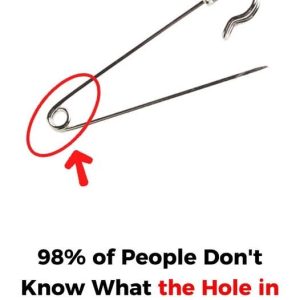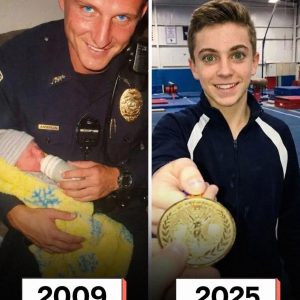The October morning had dawned crisp and clear, with the kind of golden light that transforms autumn forests into cathedral spaces of amber and scarlet. Mark Patterson adjusted his camera strap and breathed in the scent of pine and decomposing leaves as he followed his hiking group deeper into the Cascade Mountains of Washington State. At thirty-five, he was an experienced photographer who specialized in nature photography, and this weekend camping trip with old college friends had promised the perfect opportunity to capture some of the season’s most spectacular imagery.
Their group of six had been planning this excursion for months, coordinating schedules and equipment lists with the enthusiasm of people who had been friends since their university days but rarely managed to get together in person anymore. The location was perfect—a designated wilderness area that offered both challenging hiking trails and pristine camping sites, far enough from civilization to provide genuine solitude but accessible enough for their varied skill levels.
They had established their base camp in a meadow surrounded by towering Douglas firs, their tents arranged in a comfortable circle around a fire pit that would serve as the heart of their temporary community. The first day had unfolded exactly as planned: moderate hiking on well-marked trails, plenty of opportunities for photography, and the kind of easy conversation that picks up seamlessly after months or years of separation.
But as the afternoon progressed and Mark became increasingly absorbed in capturing the interplay of light and shadow through the forest canopy, he gradually fell behind the group. His friends, accustomed to his tendency to become completely focused on his photography, had continued along the trail, expecting him to catch up once he finished documenting whatever had captured his attention.
Mark was crouched beside a fallen log, adjusting his camera settings to capture the delicate fungi growing from the decaying wood, when he noticed an unusual flowering plant growing in the dappled sunlight a few yards off the main trail. The late-season wildflower was something he didn’t immediately recognize, and its unexpected beauty in the midst of the forest’s autumn transformation demanded photographic documentation.
He spent nearly twenty minutes photographing the plant from various angles, experimenting with different focal lengths and lighting conditions to capture both its delicate structure and its relationship to the surrounding forest ecosystem. Photography had always been a meditative practice for him, a way of engaging with the natural world that required both technical precision and artistic intuition.
When he finally lifted his head from the camera viewfinder and looked around for the trail that would lead him back to his friends, Mark felt the first flutter of genuine concern. The well-defined path that had brought him to this location seemed to have vanished, replaced by a maze of game trails and natural openings in the underbrush that all looked similar in the filtered forest light.
“Hey!” he called out, his voice echoing strangely among the trees. “I’m over here!”
The silence that answered him was profound and unsettling. The forest sounds he had been unconsciously aware of—bird calls, the rustle of small animals in the undergrowth, the distant murmur of his friends’ conversation—had either stopped or moved beyond the range of his hearing.
Mark tried to retrace his steps, but the forest floor, covered in fallen leaves and crossed by numerous deer trails, offered no clear indication of which direction he had come from. Every direction looked equally plausible and equally uncertain, a disorienting uniformity that made navigation nearly impossible for someone who had been focused on his camera rather than his surroundings.
For the next two hours, he wandered through increasingly unfamiliar terrain, calling periodically for his friends and listening hopefully for any response that might guide him back to the main trail. His initial confidence that he could navigate his way out of this minor predicament gradually gave way to genuine worry as the shadows lengthened and he realized he had no clear sense of direction.
The water in his hiking bottle, which had seemed adequate for a short afternoon walk, was running low. He had no food beyond a few energy bars in his camera bag, and his lightweight jacket, perfect for hiking in mild weather, would provide minimal protection if he had to spend the night outdoors as temperatures dropped.
As evening approached, Mark’s calls for help became more frequent and more desperate. The forest that had seemed beautiful and welcoming in the morning sunlight now felt vast and impersonal, a labyrinth of similar-looking trees and undergrowth that offered no landmarks he could recognize or navigate by.
He was beginning to consider the possibility that he might have to attempt to build some kind of emergency shelter when he heard something that made him freeze: a sound that was clearly made by a large animal in distress. It was a whezing, labored breathing punctuated by occasional moans that spoke of pain or exhaustion.
Mark’s first instinct was fear. He had been briefed about the wildlife in this area—black bears, cougars, and elk that could be dangerous if startled or threatened. But as he listened more carefully to the sounds, he realized they didn’t match the vocalizations he would expect from predators. This sounded more like an animal that was suffering rather than hunting.
Moving carefully through the underbrush toward the source of the sounds, Mark pushed aside a screen of low-hanging branches and found himself face-to-face with one of the most heartbreaking sights he had ever encountered.
A young mule deer, probably a two-year-old buck based on his size and the small antlers visible beneath the rope that encircled his head, was lying on his side in a small clearing. His neck, chest, and front legs were tightly bound with what appeared to be synthetic climbing rope, the kind used by mountaineers and rescue workers. The rope had been wound around the animal multiple times, creating a complex web of restraints that prevented normal movement and appeared to be cutting off circulation to his extremities.
The deer was clearly exhausted from his struggles to free himself. His breathing was labored, his eyes showed the kind of stress that comes from prolonged pain and fear, and dried foam around his mouth indicated he had been trapped for some time, possibly hours or even days.
“Oh, God,” Mark whispered, setting down his camera and approaching slowly with his hands visible and non-threatening. “What happened to you, buddy?”
The deer’s ears flickered at the sound of his voice, but the animal lacked the strength to attempt escape. His struggles had only tightened the ropes further, creating a cruel trap that grew more restrictive with every attempt at freedom.
Mark had grown up on a small ranch in Montana and had enough experience with large animals to understand that approaching a frightened, injured deer required extreme caution. Even an animal this size could cause serious injury with its hooves if it panicked, and wild animals in distress were particularly unpredictable in their reactions to human contact.
But looking at the deer’s condition, Mark knew that intervention was the animal’s only chance of survival. The ropes were clearly cutting off blood circulation, and the stress of prolonged entrapment was taking a severe toll on the animal’s strength and health.
“Easy, boy,” Mark said softly, moving closer with slow, deliberate movements. “I’m not going to hurt you. I want to help.”
The deer watched him approach with the kind of alert wariness that wild animals maintain even when they’re too weak to flee. But something in Mark’s tone or manner seemed to communicate his benevolent intentions, because the animal remained still as Mark knelt beside him and began examining the rope constraints.
The situation was even worse than it had appeared from a distance. The ropes were not randomly tangled around the deer—they had been deliberately tied in a pattern that suggested human involvement. Someone had intentionally bound this animal, either as some kind of cruel prank or as part of an illegal capture attempt that had gone wrong.
The synthetic rope was strong and tightly knotted, requiring Mark to use his pocket knife to cut through the restraints. Each cut had to be made carefully to avoid injuring the deer, who flinched at every movement but seemed to understand that Mark was trying to help rather than harm him.
“I know this is scary,” Mark murmured as he worked, keeping up a steady stream of quiet conversation that seemed to calm the animal. “But I’m going to get you out of this. Just hold still for me.”
The process took nearly thirty minutes. Some of the ropes had cut so deeply into the deer’s hide that they had to be carefully worked loose from wounds that had formed around them. Mark used water from his dwindling supply to clean the worst of the cuts, worried about infection but knowing that freeing the animal from the constraints was the highest priority.
When the last rope finally fell away, the deer lay still for a moment, as if he couldn’t quite believe he was no longer bound. Then, slowly and carefully, he struggled to his feet, testing his weight on legs that had been partially immobilized for unknown hours.
Mark stepped back to give the animal space, expecting him to bolt immediately into the forest as most wild creatures would do after such a traumatic experience. Instead, the deer stood quietly for several minutes, looking directly at Mark with an expression that seemed to convey both gratitude and recognition.
“There you go,” Mark said softly. “You’re free now. Get out of here before whatever did this to you comes back.”
But instead of fleeing, the deer made a sound unlike anything Mark had ever heard from a wild animal—a long, melodious call that seemed almost musical in its complexity. It was clearly a form of communication, but directed at Mark rather than at other deer who might be in the area.
Then the deer began walking slowly into the forest, pausing every few steps to look back at Mark as if expecting him to follow.
Mark hesitated, his rational mind telling him that following a wild animal deeper into unfamiliar forest was exactly the opposite of what he should do in his situation. He was already lost, running low on water, and facing the prospect of a night in the wilderness without adequate gear for survival.
But something about the deer’s behavior was so deliberate, so clearly purposeful, that Mark found himself trusting an instinct he couldn’t rationally explain. The animal had waited for him to cut away the ropes, had remained calm during the entire rescue process, and was now behaving in a way that suggested intelligence and intentionality rather than simple animal instinct.
“Are you trying to show me something?” Mark asked, feeling slightly foolish for talking to a deer but unable to interpret the animal’s behavior any other way.
The deer stopped walking and turned to face him directly, making eye contact in a way that wild animals rarely do with humans. Then he took a few more steps into the forest and paused again, clearly waiting for Mark to follow.
Against every principle of wilderness survival he had ever learned, Mark began following the deer through the forest. The animal moved at a pace that accommodated Mark’s less sure footing, pausing whenever the underbrush became particularly difficult to navigate and choosing paths that, while not always easy, were consistently passable for a human on foot.
For forty-five minutes, they made their way through terrain that Mark couldn’t have navigated on his own in the gathering darkness. The deer seemed to know exactly where he was going, moving with the confidence of an animal traveling familiar territory rather than wandering randomly through the forest.
Mark’s legs were shaking from exhaustion and his water bottle was empty when he first noticed the glow ahead through the trees. At first he thought it might be moonlight reflecting off water or some natural phenomenon he couldn’t identify. But as they drew closer, the warm, flickering quality of the light became unmistakably artificial.
They emerged from the dense forest into the familiar meadow where his friends had established their campsite. The fire was burning brightly in the center of their circle of tents, and Mark could see all five of his companions sitting around it, their faces showing the strain and worry of people who had been conducting an increasingly frantic search for a missing friend.
“Mark!” Lisa called out, spotting him first as he stumbled into the circle of firelight. “Thank God! We’ve been looking for you for hours. We were about to call for a rescue team.”
Mark turned to acknowledge the deer that had guided him home, intending to point out the animal to his friends and explain the incredible rescue he had just performed. But the forest edge was empty. The deer had vanished back into the darkness as silently as he had appeared, leaving no trace of his presence except for the memory of his strange, melodious call and the knowledge that Mark would never have found his way back to camp without his guidance.
“I got lost,” Mark said simply, accepting the water bottle and energy bar that his friends thrust into his hands. “But I had some help finding my way back.”
Over the warmth of the campfire, he told them about the deer—the cruel ropes that had bound the animal, the careful process of cutting him free, and the extraordinary behavior that had led Mark safely back to their camp. His friends listened with the kind of polite attention that people give to stories they want to believe but find difficult to accept at face value.
“Animals have incredible navigation abilities,” Tom offered, clearly trying to find a rational explanation for what Mark had experienced. “Maybe the deer was just heading toward water, and you happened to follow him in the right direction.”
“Maybe,” Mark agreed, though he knew the deer’s behavior had been far more purposeful than simple coincidence could explain. The animal had waited for him, had guided him through difficult terrain, and had brought him directly to his campsite rather than to any general water source or natural landmark.
That night, as Mark lay in his sleeping bag listening to the forest sounds that had seemed so ominous when he was lost, he thought about the strange bond that had formed between him and the deer during their brief encounter. He had saved the animal’s life by cutting away the ropes, and the deer had returned the favor by leading him home. It was a transaction that made sense on an emotional level even if it defied rational explanation.
The next morning, Mark returned to the clearing where he had found the deer, hoping to find some trace of the animal or perhaps some evidence of who had been responsible for the cruel binding. He found the cut ropes scattered on the forest floor, confirmation that his experience had been real rather than some stress-induced hallucination. But there was no sign of the deer himself or any indication of who might have trapped him in such a deliberately cruel manner.
Back at camp, Mark’s friends were preparing for their hike out of the wilderness, packing gear and discussing the route that would take them back to their vehicles. But Mark found himself reluctant to leave, haunted by questions about the deer’s welfare and troubled by the evidence that someone had deliberately harmed a wild animal in such a calculated way.
“You did what you could,” Lisa told him as they prepared to break camp. “You saved that deer’s life. Whatever happens to him now, at least he has a chance because of what you did.”
“I know,” Mark replied. “But it bothers me that someone did that to him deliberately. This wasn’t an accident or an animal getting tangled in discarded rope. Someone tied those knots specifically to restrain that deer.”
The incident stayed with Mark long after they returned to their regular lives. He reported the animal cruelty to the appropriate wildlife authorities, providing detailed photographs of the rope evidence and the location where he had found the deer. The investigation that followed revealed that there had been several similar incidents in the area over the past year, suggesting someone was systematically trapping and torturing wildlife for unknown reasons.
But the aspect of the experience that remained most vivid in Mark’s memory was not the cruelty he had discovered, but the extraordinary intelligence and apparent gratitude the deer had displayed in leading him home. The encounter had challenged his assumptions about the cognitive and emotional capabilities of wild animals, forcing him to consider the possibility that consciousness and intentionality existed in forms he had never previously recognized.
Six months later, Mark returned to the same wilderness area, drawn by a desire to revisit the location where his most profound encounter with wildlife had occurred. He hiked to the clearing where he had found the deer, half-hoping and half-fearing that he might encounter the animal again.
He didn’t find the deer, but he did find evidence that the animal had survived and was thriving. Fresh deer tracks in a muddy area near a stream showed the distinctive gait pattern of an animal with a slight irregularity in one front leg—exactly the kind of minor permanent injury that might result from prolonged constraint by tight ropes.
More significantly, Mark discovered that the clearing had become something of a crossroads for local wildlife. Game cameras positioned by wildlife researchers had captured images of dozens of different species using the area as a gathering place—deer, elk, bears, and smaller animals all seemed drawn to this particular location for reasons that weren’t immediately apparent to the scientists studying the area.
Mark never saw his deer again, but he came to understand that their brief encounter had been part of something larger than a simple exchange of favors between human and animal. His act of compassion had freed a creature who had then demonstrated the kind of intelligence and moral reciprocity that most people assume exists only in human relationships.
The experience changed Mark’s approach to nature photography, leading him to focus more on documenting animal behavior and conservation issues rather than simply capturing beautiful images. His photographs from that wilderness area eventually became part of a campaign to increase protection for the region and crack down on the illegal activities that were harming local wildlife.
But perhaps most importantly, the encounter with the deer had taught Mark something about the interconnectedness of all living things, about the possibility that acts of kindness create ripples of positive effect that extend far beyond what we can see or understand. In a world that often seems dominated by cruelty and indifference, his experience suggested that compassion is not only the right choice morally, but often the practical choice as well.
Years later, when Mark told the story to his own children during camping trips, he would emphasize not the miraculous nature of the deer’s guidance, but the simple principle that had made it possible: when you help others without expectation of reward, you often find that the universe has ways of helping you in return. The deer hadn’t guided him home because of some mystical connection between human and animal, but because kindness had created a bond of trust that transcended species boundaries.
“Animals are a lot smarter than most people think,” he would tell his children as they sat around their own campfire in the same wilderness area where his life had been changed by a single act of compassion. “And they remember who treats them with kindness. The deer didn’t owe me anything, but he understood that I had helped him when he needed help, and he returned the favor when I needed it.”
The story became a family legend, passed down as an example of how treating all living creatures with respect and compassion can create connections that transcend our normal understanding of how the world works. And every time Mark returned to that wilderness area, he would pause at the clearing where he had first encountered the deer, grateful for the lesson he had learned about the power of simple kindness to transform both giver and receiver in ways that can last a lifetime.Sophia Rivers is an experienced News Content Editor with a sharp eye for detail and a passion for delivering accurate and engaging news stories. At TheArchivists, she specializes in curating, editing, and presenting news content that informs and resonates with a global audience. Sophia holds a degree in Journalism from the University of Toronto, where she developed her skills in news reporting, media ethics, and digital journalism. Her expertise lies in identifying key stories, crafting compelling narratives, and ensuring journalistic integrity in every piece she edits. Known for her precision and dedication to the truth, Sophia thrives in the fast-paced world of news editing. At TheArchivists, she focuses on producing high-quality news content that keeps readers informed while maintaining a balanced and insightful perspective. With a commitment to delivering impactful journalism, Sophia is passionate about bringing clarity to complex issues and amplifying voices that matter. Her work reflects her belief in the power of news to shape conversations and inspire change.






